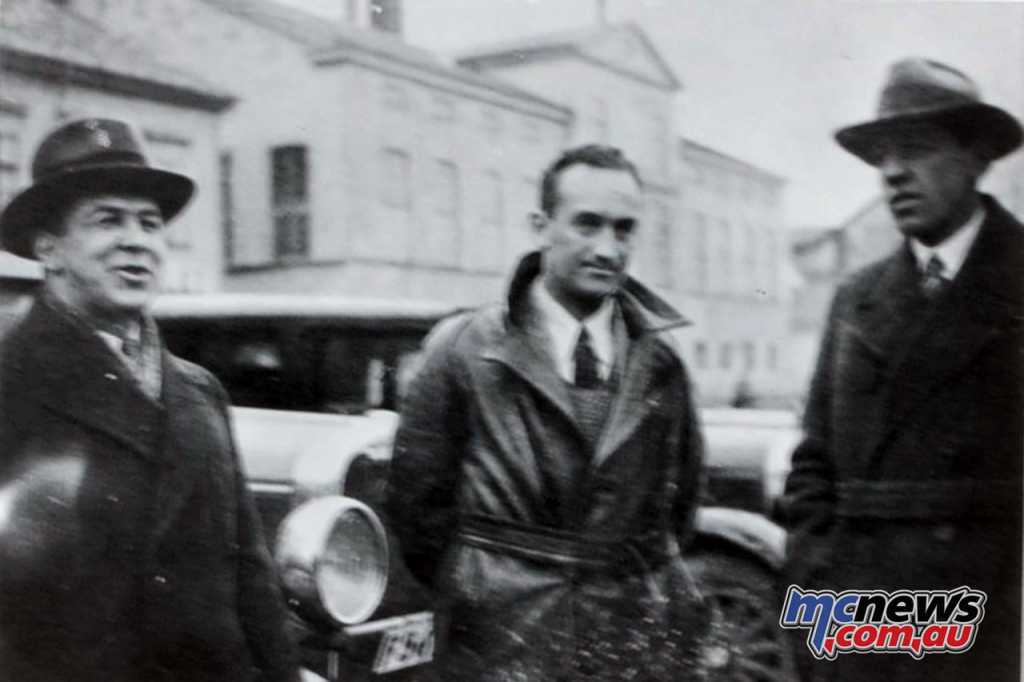By Kenneth Olausson
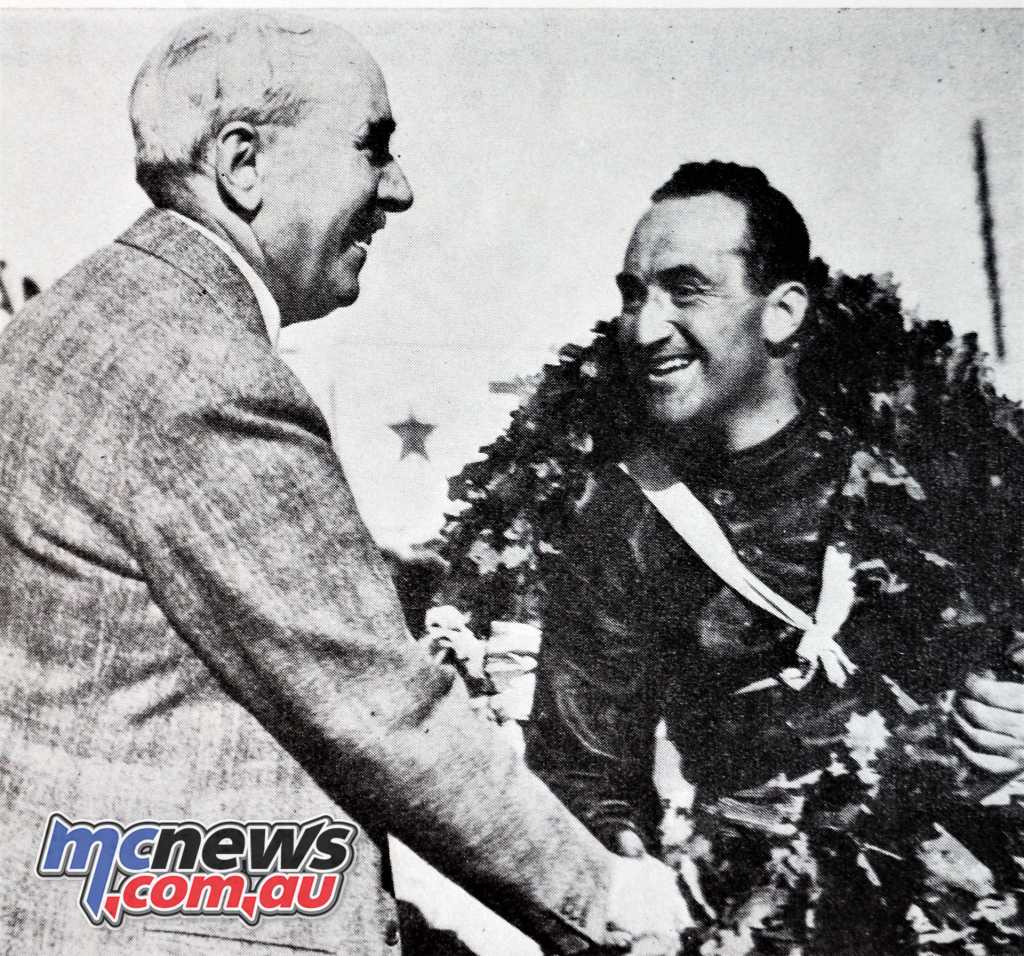
Stanley Woods was a big name in motorcycle racing in the 30s. Born in Dublin in 1904, he became the most successful Isle of Man TT rider of the era with 10 wins, a record held for over 25 years until the late Mike Hailwood bettered that number. When he did so, Woods was waiting at the finish line to congratulate his colleague. The son of a toffee salesman, Stanley Woods would always bring boxes of candy for the scouts who manned the IoM scoreboard on which the grandstand audience relied to follow the races.
As a youngster, Stanley rode a 1000cc Harley sidecar and borrowed this machine to make his race-debut in 1921. He had removed the sidecar and competed in a public road event until a crash forced him out of the race. Replacing the broken handlebars with a branch cut from a roadside hedge, he went back home. Woods’ TT career began in 1922.
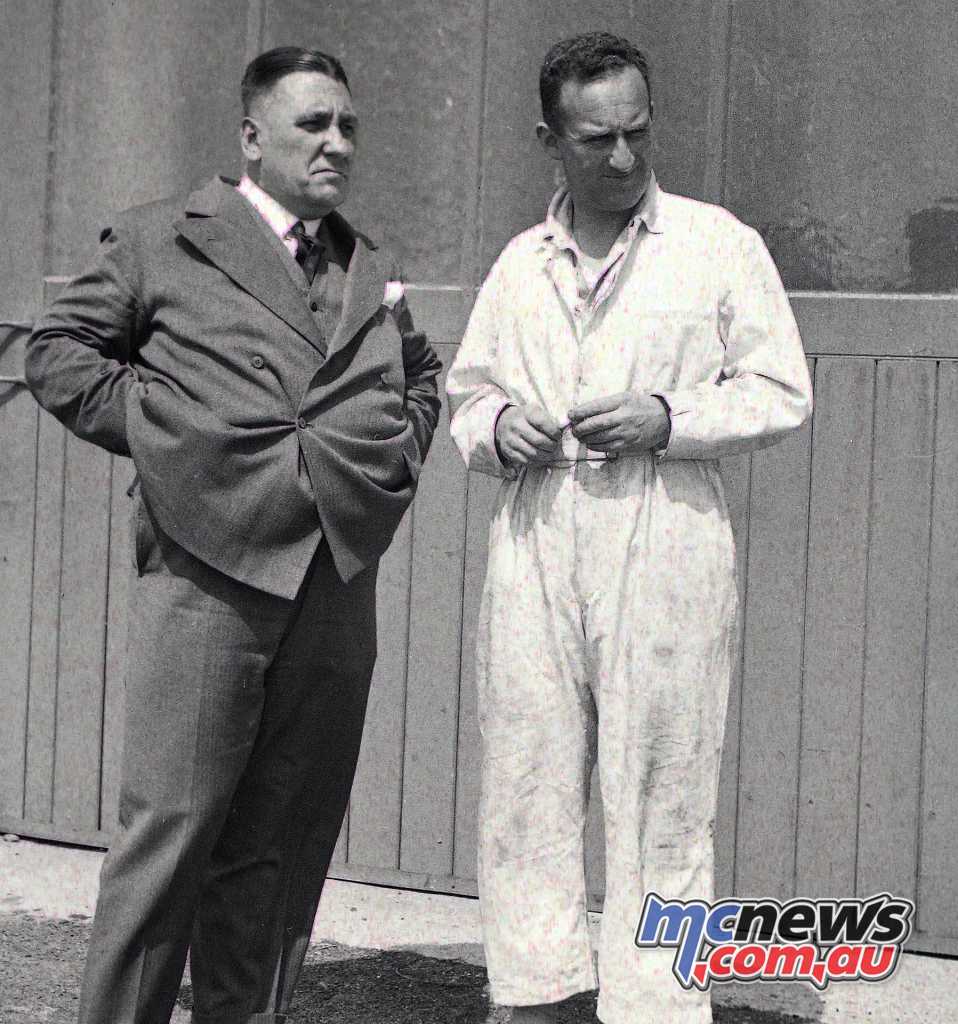
Unfortunately, his machine caught fire during a refuelling stop. He dowsed the fire, brushed aside the officials who were trying to persuade him to stop, and rode off to finish the race in fifth place – he was 18 years old. In 1923 he was back and won his first TT-race. There were to be many more and Stanley always conquered there. His association with British manufacturers spanned from 1926-34.
By 1934, at the height of his career, Stanley Woods chose to switch to Husqvarna. His independent character and the prospect of better money led him to sign for the Swedish factory. In February 1934, Stanley came to Sweden to discuss motoring matters with boss Folke Mannerstedt.
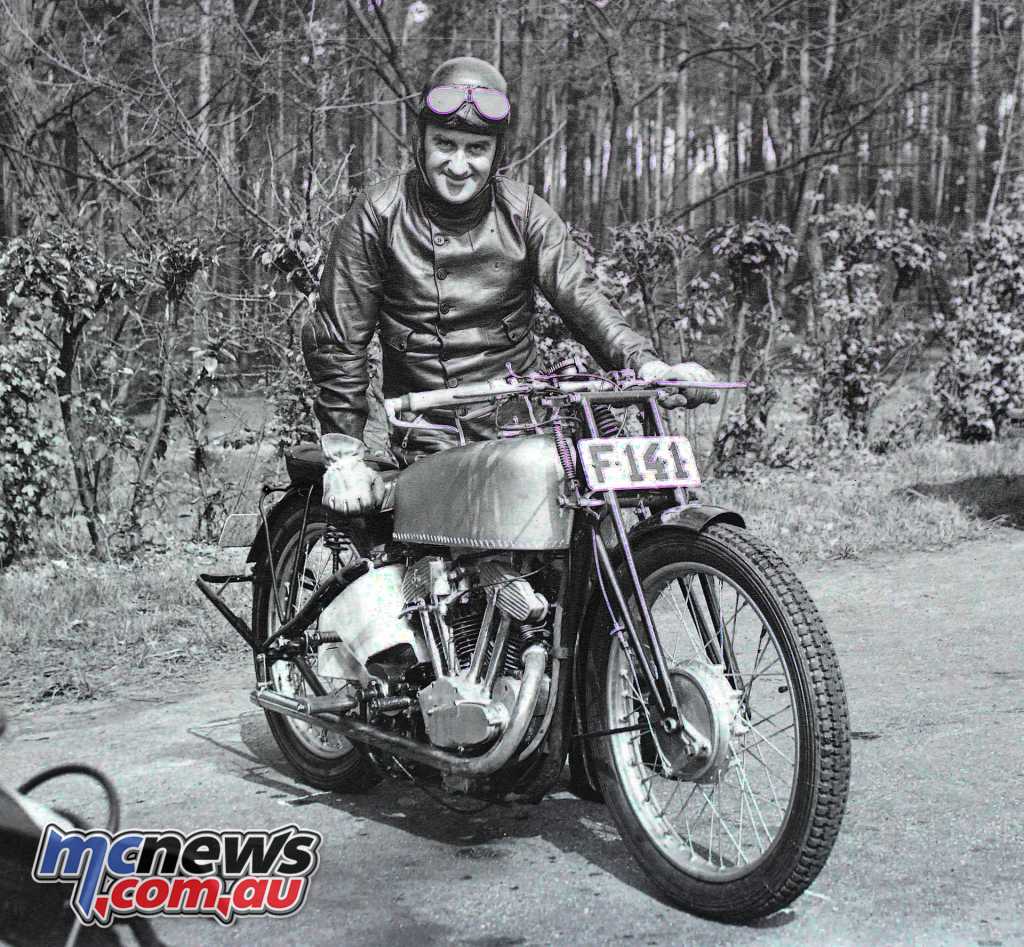
He wanted to have detailed info on his new Husky-Banana (English wording for those who wouldn’t pronounce the Swedish brand correctly). The Irishman was curious about a national ice racing event. At the famous Lake Axamo in mid-Sweden, he was guided by specialists Kalén and Sunnqvist, who let the Irishman in on the secrets of broad-sliding on ice.
“I have never been so frightened in my whole life,” said Woods when he saw the riders perform in the cold. But, on February 18th, Woods was ready for his chilly ice debut at the Stockholm Vallentuna track. It proved to be less successful than he was on the tarmac. The machine did not start until half the race was over, so no triumph and the 35,000-strong crowd were disappointed.
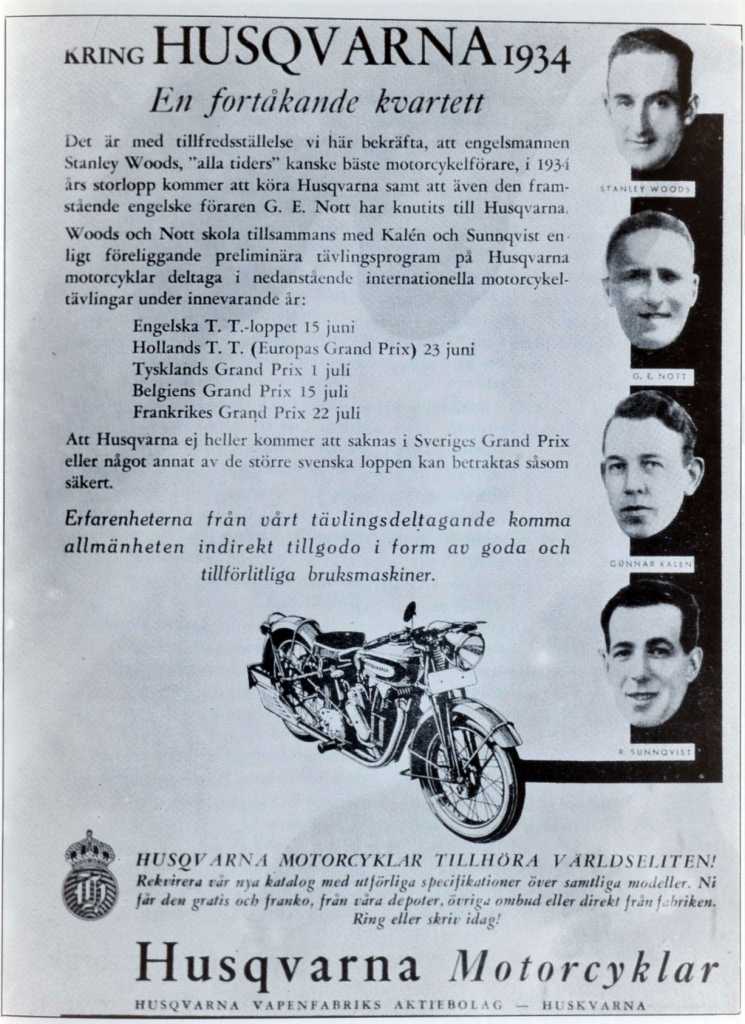
A week later, he tried again at Lillehammer in Norway when his chain broke right after the start. But there would be prosperous times. Husqvarna advertised their factory team for 1934, which not only included Woods but also Ernie Nott who rode the Swedish 350cc machine. Together with Gunnar Kalén and Ragnar Sunnqvist, Husqvarna had the highest quality team of all time.
Saxtorp 1935; 150’000 spectators, 17 starters in the 500 C-class, Husqvarna started as favourites with Stanley Woods competing as a rookie. Starting at 12.45, it was an incredible day! Stanley had last-minute spark plug troubles and set off fifth but was already second after the first lap. Another round and the Irishman lay ahead of the entire field. Husqvarna were dominating on home turf. But after five laps Woods was missing.
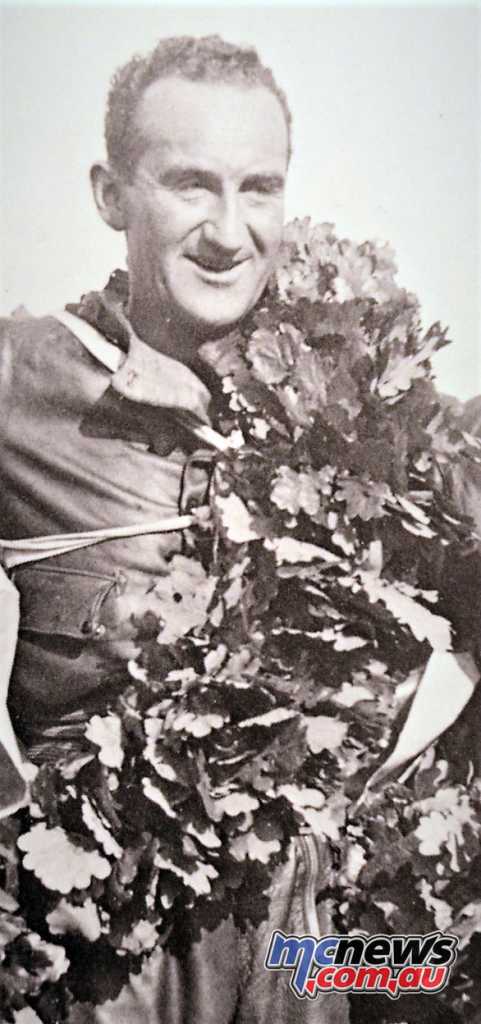
His machine had stopped and he stood alongside the track at Dösjöbro for a while before the engine fired up again. Time and effort were of the essence now. Stanley Woods went straight into the paddock where it was confirmed that he had a faulty gearbox. Normally there was nothing you could do, but the factory mechanic Nils Jacobsson fixed the gearbox in 14 minutes – with a little help. He was not allowed to enter the pits, so he worked lying horizontal, hanging over the paddock wall, as someone held his feet. Quite spectacular – there was no ‘no can do’!
When Woods went back out onto the circuit again, he was two laps behind the leader. After 19 laps Woods went up to second place, a minute and 12 seconds behind now. Things looked difficult, but manageable for the champion. Two laps later he led the race again and was able to ease down his pace for safety. So, the fabulous Irishman took victory after 3.31 hours of racing. His average speed was 123.7 km/h with his best lap at six minutes and four seconds (av. 143.55 km/h).
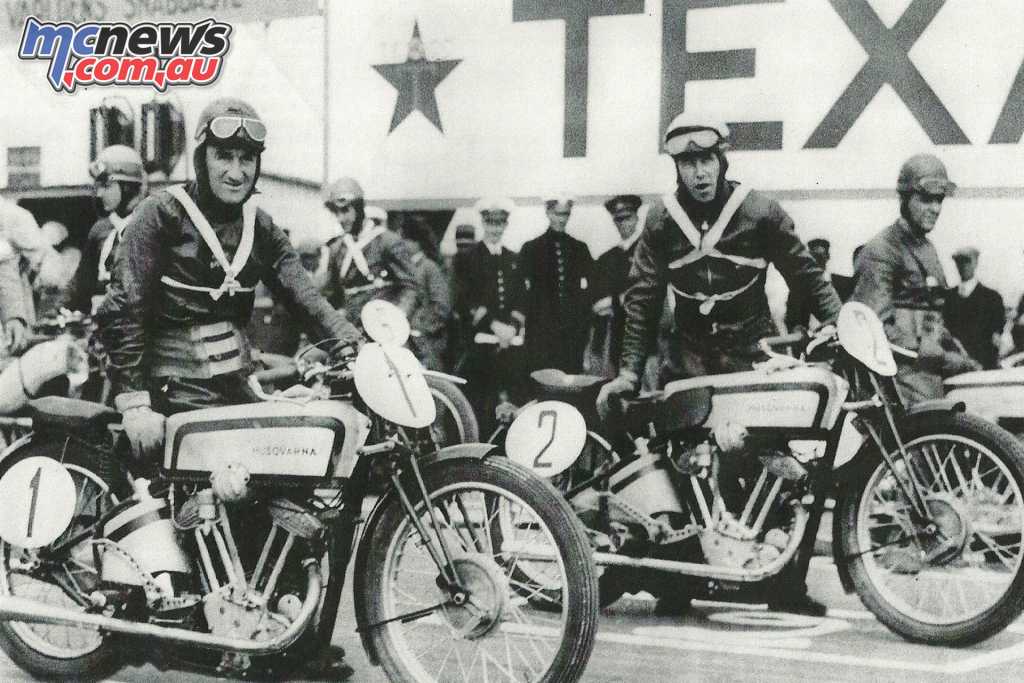
Stanley Woods had a fearless riding style and would talk calmly of drifting corners at 100mph on the loose surfaces of its time – this was combined with good mechanical knowledge and sympathy. The motorcycle press at the time described him as the ‘Irish Dasher’ with stylish riding manners that were influenced from watching fellow TT competitor’s race. But he was also a sly rider, as ragged as the outline of his face, he knew how to handle his machine tactically.
On top of it all, Stanley Woods never gave up, being a true fighter in his game. His ability built him into a legend, but he was a modest man and chose to avoid recognising fame. His racing era took place against a backdrop of a poverty-stricken Ireland and a rapidly changing, pre-war Europe. Woods’ standing in the history of the TT was so high that in 1968, experts named him the greatest of the island’s competitors. In 1996 the Irish Post Office issued stamps of notable Irish motorcyclists that included Stanley Woods. Fanfares to one the greatest icons with another Irish proverb, which he liked, “If you’re lucky enough to be Irish, you’re lucky enough!”
